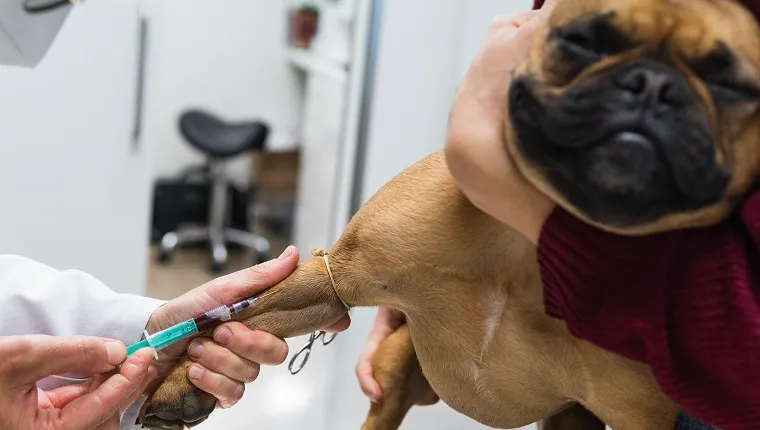Methemoglobinemia in dogs is a specific type of anemia usually caused by either genetic issues or as a result of a canine being exposed to chemicals. It often appears as the dog’s blood looking a brownish color rather than red.
In normal circumstances, hemoglobin in the blood carries oxygen around a dog’s body. But when iron oxygenation occurs, it instead produces methemoglobin, which does not carry oxygen.
If you see signs that your canine might be suffering from this type of anemia, then you must consult your veterinarian for a proper diagnosis and course of treatment. Here’s what you should know about the symptoms, causes, and treatments of methemoglobinemia in dogs.
Symptoms Of Methemoglobinemia In Dogs
Methemoglobinemia in dogs is a condition which produces a range of symptoms. Some of the most common symptoms include:
- Increased rate of breathing
- Acting generally lethargic
- Gums turning blue
- Unwillingness to exercise
- Vomiting
- Swollen face
Causes Of Methemoglobinemia In Dogs

The cause of methemoglobinemia in dogs is often a genetic disorder.
However, other cases may come about due to exposure to certain chemicals. Some of the common chemicals that risk causing methemoglobinemia include Ibuprofen and Acetaminophen-based medicines and topical Benzocaine-based treatments.
Treatments For Methemoglobinemia In Dogs
If you suspect that your dog might be suffering from methemoglobinemia, your veterinarian will ask a series of questions designed to work out if there’s a chance your dog has recently ingested the medicines Ibuprofen and Acetaminophen or used a topical treatment like Benzocaine. The vet may order a blood test might to monitor the level of red blood cells.
Vets can also use spot tests can also be used to confirm a diagnosis. The test involves comparing a droplet of the dog’s blood next to a droplet of normal canine blood and comparing the colors. An afflicted dog will have blood that visibly appears more brown in color.
The precise treatment will depend on the root of the condition. If medicine is behind the issue, then your vet will advise you to stop using the medicine. Vets sometimes also induce vomiting to help flush the dog’s system of any offending substances.
In more severe cases, some of the methods that vets might use as treatment include intravenous drips, blood transfusions, and a substance known as methylene blue, which works to reduce the amount of methemoglobin in a dog’s body.
In all cases of recovery, it’s important to conduct exercise sessions with caution and to provide a calm and relaxed home atmosphere to get your dog back to health.
Has your dog ever suffered from methemoglobinemia? Was it because your dog took a certain medication? Then tell us all about it in the comments below.









